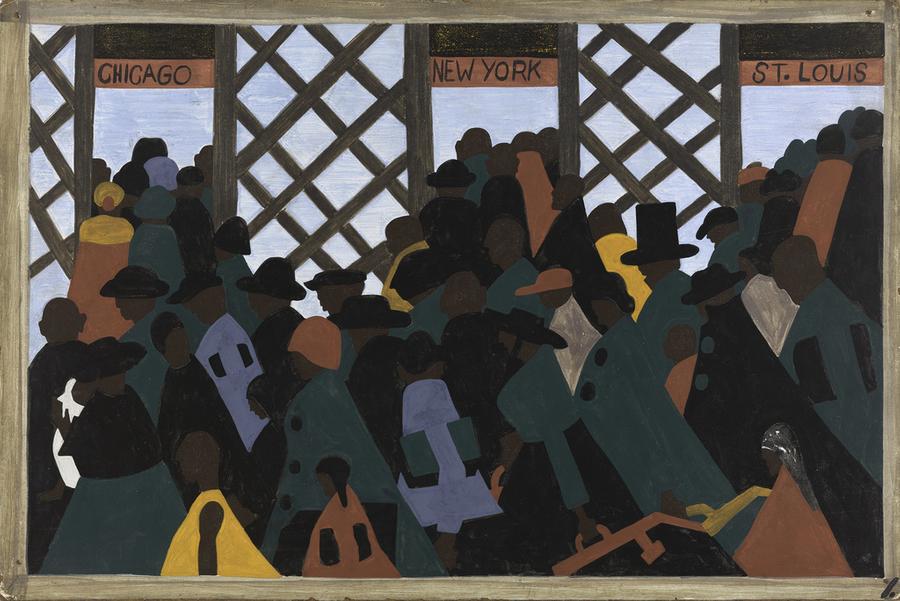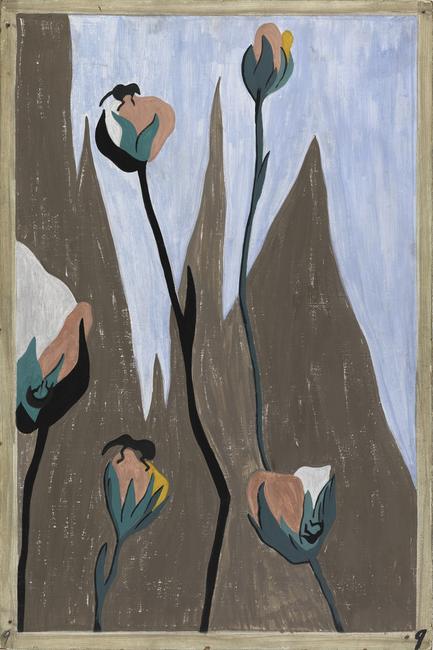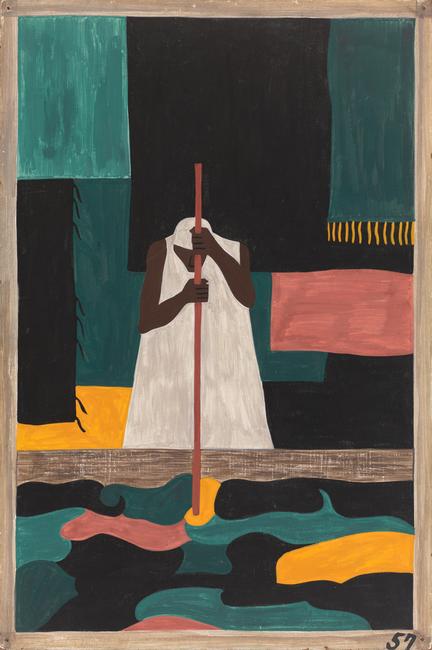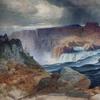Phillips Collection Exhibition Reunites All 60 Panels from Jacob Lawrence's Migration Series
- WASHINGTON, DC
- /
- September 14, 2016

This fall, all 60 panels of the masterwork The Migration Series by renowned African American 20th-century artist Jacob Lawrence will be on display at The Phillips Collection in People on the Move: Beauty and Struggle in Jacob Lawrence’s Migration Series. A powerful visual epic, The Migration Series (1940–41) documents the historic movement of millions of African Americans from the rural South to the urban North more than a century ago. Reuniting 30 panels owned by the Phillips with 30 panels on loan from the Museum of Modern Art, Lawrence’s complete series will be on display beginning October 8, 2016, and will run until January 8, 2017. This exhibition builds on the museum’s rich and meaningful history with the artist over the course of decades in exhibitions and internationally recognized educational initiatives.

“Since the time Duncan Phillips first acquired the odd-numbered panels of Lawrence’s series in 1942, The Migration Series has remained a cornerstone of our permanent collection and a force in our educational work with international communities,” said Director Dorothy Kosinski. “While Jacob Lawrence’s masterpiece was created more than 70 years ago, it continues to resound powerfully with the global plight of migrants today. I look forward to the Phillips continuing its leadership role in using The Migration Series to stimulate dialogue and reflection on global challenges in the 21st century.”
“In panel 60 of The Migration Series, Lawrence leaves us with the message, ‘And the migrants keep coming,’” said curator Elsa Smithgall. “During a time when record numbers of migrants are uprooting themselves in search of a better life, Lawrence’s timeless tale and its universal themes of struggle and freedom continue to strike a chord not only in our American experience but also in the international experience of migration around the world.”
In conjunction with the exhibition, the Phillips will launch a dynamic interactive website on October 2 that will engage audiences with the historic and contemporary implications of migration. Special features include never-before-published video interviews with Jacob Lawrence as well as multiple perspectives from artists and scholars across disciplines. The website invites users to add their voices to the dialogue by offering their own visions for a 61st panel in the series or creating poems using words from prominent Harlem Renaissance poets.
Jacob Armistead Lawrence was born in Atlantic City, New Jersey, in 1917. The son of southern migrants, he moved with his mother and sister to Harlem in 1930 at the age of 13. During his participation in community art workshops there, Lawrence quickly discovered his love for art through the encouragement of such teachers as painter Charles Alston. Throughout the 1930s, Lawrence’s art was inspired by the cultural visionaries of the Harlem Renaissance. In 1938, Lawrence had his first solo exhibition at the Harlem YMCA and started working for the WPA Federal Art Project. In 1940, he received a grant from the Julius Rosenwald Fund to create a 60-panel epic, The Migration of the Negro (now known as The Migration Series). The following year, when the series was exhibited at Edith Halpert’s Downtown Gallery, the then 23-year-old artist catapulted to national acclaim. In the following decades, Lawrence continued to create paintings drawn from the African American experience as well as historical and contemporary themes, such as war, religion, and civil rights. He taught with Josef Albers at Black Mountain College in North Carolina in 1946 and later at the Skowhegan School of Painting and Sculpture in Maine. He moved to Seattle in 1971, teaching at the University of Washington until 1983. During his later years, Lawrence worked in a variety of media, including large scale murals, silkscreen prints, and book illustrations. Until his death in 2000, Lawrence honed a unique visual language of abstraction that remained steeped in the human condition.

The Migration Series portrays the mass exodus of more than a million African Americans from the rural South to the industrial North, following the outbreak of World War I. This Great Migration, fueled by wartime labor shortages in the North and oppressive conditions in the South, resulted in the largest population shift of African Americans since the time of slavery. Using bold forms, colors, and gestures, Lawrence distilled the migration experience into a powerful expression of the human condition. From lynching in the South to the bombing of African American homes in the North, Lawrence’s panels delve deeply into the struggles of people in search of greater economic, social, and political freedom.
Lawrence approached the panels methodically as part of a series. He wrote captions, made preparatory drawings, and primed the hardboards with gesso before painting each one with a hand-mixed casein tempera. To ensure a uniform appearance, he applied a given color onto each panel in succession, starting with the darkest hue of black and proceeding to the lighter values. Integrating text and image, Lawrence created his epic statement in poetic cadences of simple shapes and colors as well as recurring symbols of movement: the train, the station, and people traveling. New York art dealer Edith Halpert arranged for The Migration Series to be published in Fortune (November 1941), exhibited at her Downtown Gallery (November 1941–January 1942), and jointly purchased in 1942 by The Phillips Collection (odd-numbered panels) and the Museum of Modern Art (even-numbered panels). At the young age of 24, Lawrence received national acclaim for a series he later deemed the “creative highlight” of his career.
This exhibition is accompanied by a catalogue, Jacob Lawrence: The Migration Series, co-published by The Phillips Collection and the Museum of Modern Art. Featuring images of all 60 panels and short descriptive texts, the book explores the cultural and political settings from which Lawrence’s art was inspired. Phillips Curator Elsa Smithgall discusses the work's early exhibition history and describes how it came to be acquired by two museums. MoMA curator Leah Dickerman discusses Lawrence's ability to use art as a medium for social change. Introduced by poet Elizabeth Alexander, the catalogue also includes a section that features 11 poems written by 10 poets that were specially commissioned in response to Lawrence's epic masterwork.
For info and programming, visit http://www.phillipscollection.org/















_(17100x100_c.jpg)
